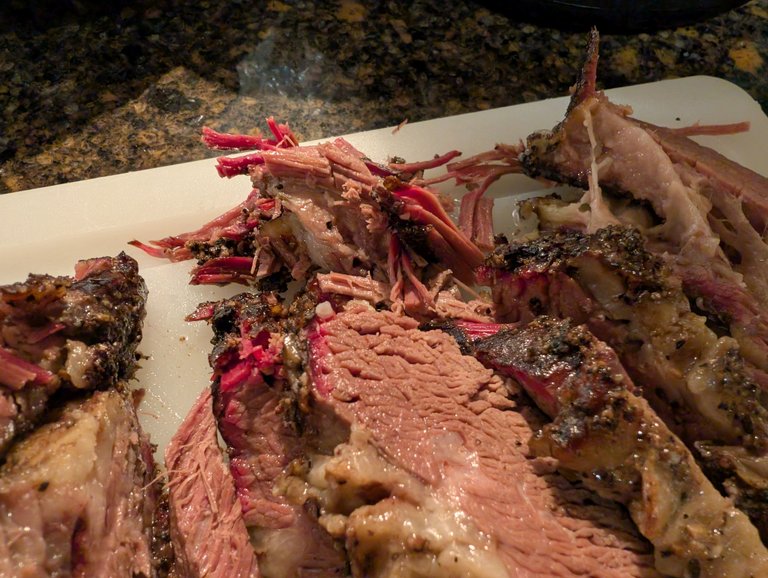
You might recall a while ago around Thanksgiving I mentioned that my in-laws decided that in addition to smoked turkey for Thanksgiving dinner, they also wanted me to smoke a brisket next year. Since I have only ever smoked brisket one other time in my life, it was decided that I needed a practice run to see if it would be feasible next year.
My brother in law buys part of a cow each year and has it butchered, so he already had a 8.5 pound brisket sitting in his freezer. He pulled it out of the freezer on Thursday, then handed it off to me on the Saturday before Christmas.
To say I was nervous would be an understatement. The size and cost of brisket makes it one of those things that you really feel bad if you mess it up. I was also a bit concerned about time. If you are like me, you have a lot of stuff going on around the holiday season. Since I don't use one of those set it and forget it smokers, tending to a brisket cook can be pretty time consuming.
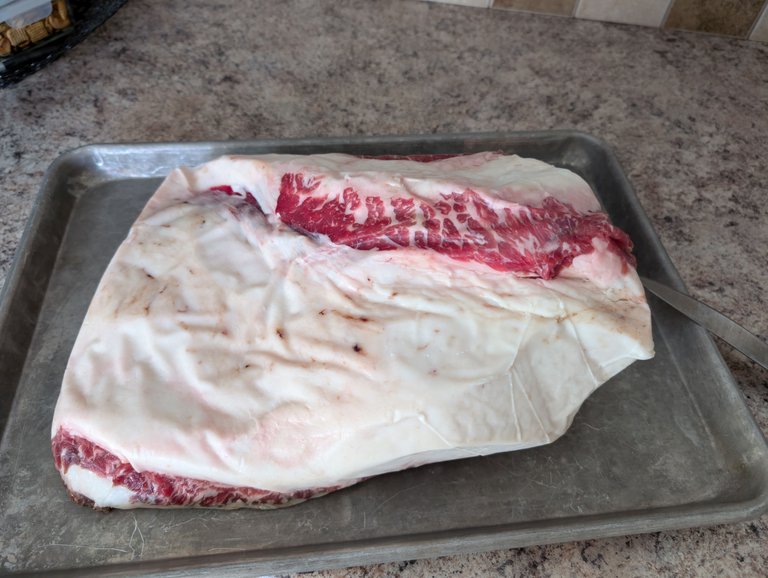
Ultimately, I decided I would smoke it on Saturday afternoon, then hold it in the fridge after it got to temperature until Christmas Eve afternoon when I would heat it back up in the oven. As you can see, there was quite a lot of fat on the brisket. If I had to guess, it was close to three or four pounds of fat that I trimmed off the brisket. I should have kept it for some of my friends who make beef tallow, but I threw it away.
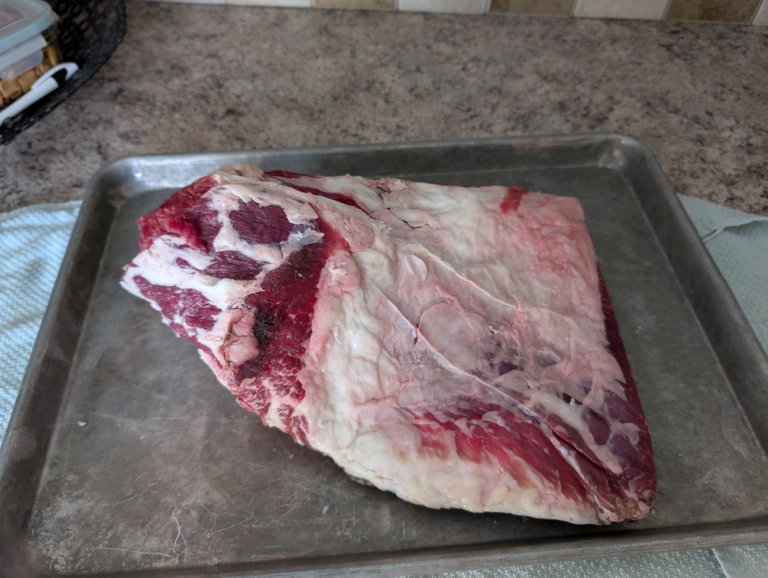
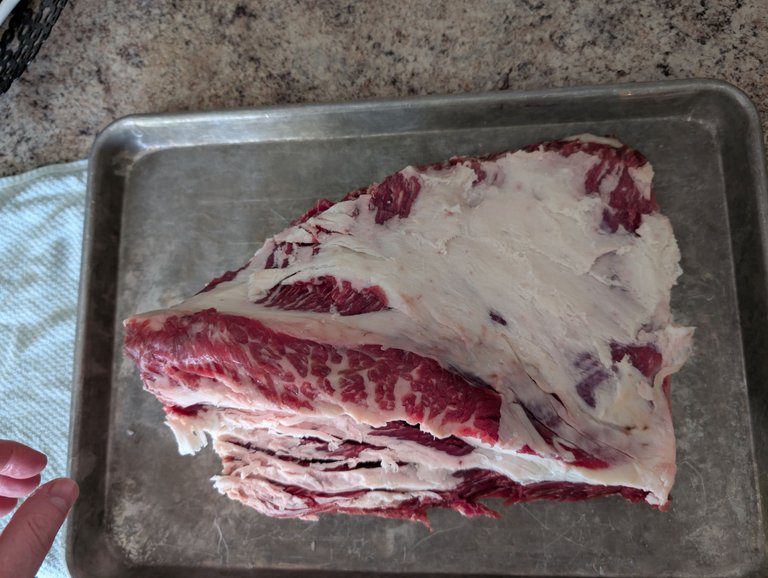
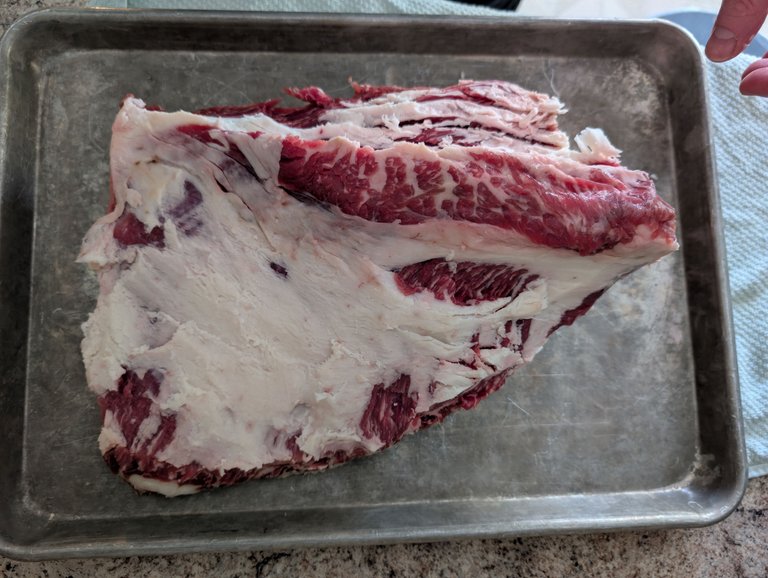
Looking back I probably should have cut a bit more of the fat off the brisket and in the future I will probably do just that.

I then used some Montreal Steak seasoning and I rubbed the brisket on all sides with the mixture. I feel this was another one of my mistakes. Montreal Steak seasoning is heavy on the salt and while you definitely want a bit of salt in your rub, I feel like this was a bit too much. In the future I will be better prepared and I will have a dedicated brisket rub on hand.
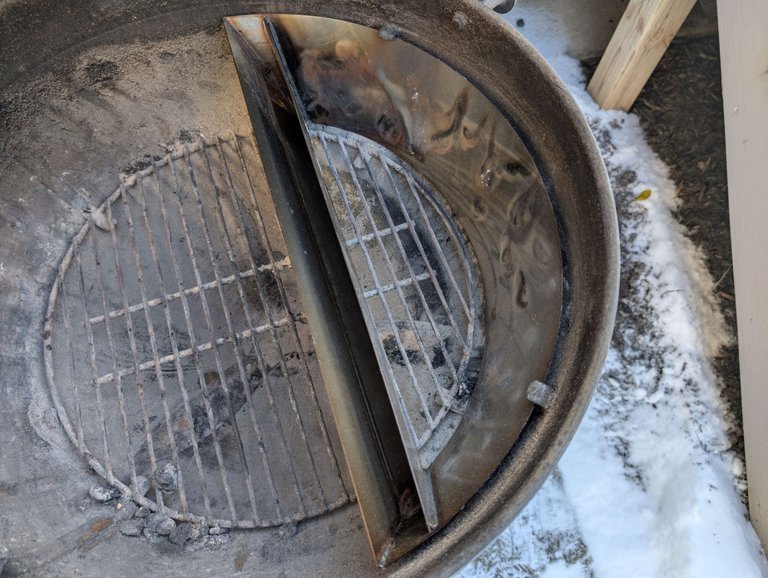

With the rub working its magic, I started to set up my Weber kettle for the cook. I bought this accessory called the Slow N Sear a while ago. It's basically an insert that allows you to keep your coals separate and it also gives you a water chamber to help maintain the temperature on longer cooks.
I laid some aluminum foil down on the other side where the brisket was going to sit, put some coals in one corner of the slow n sear, and got them started.
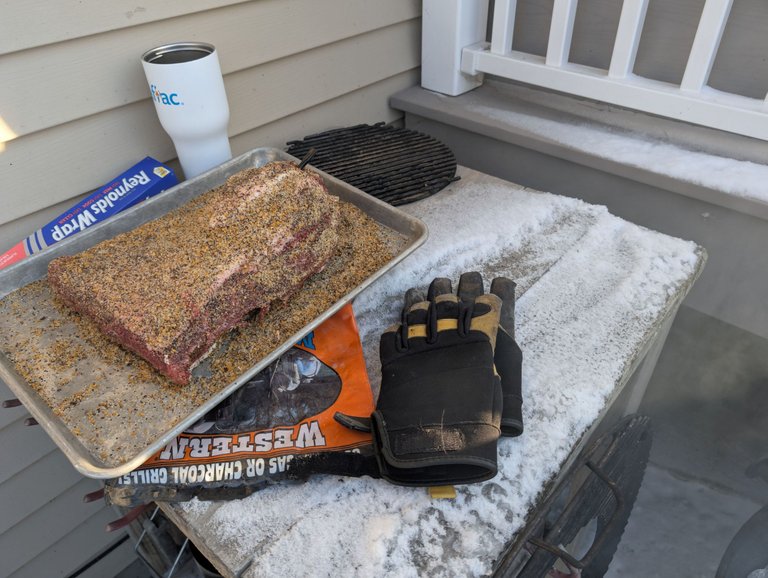
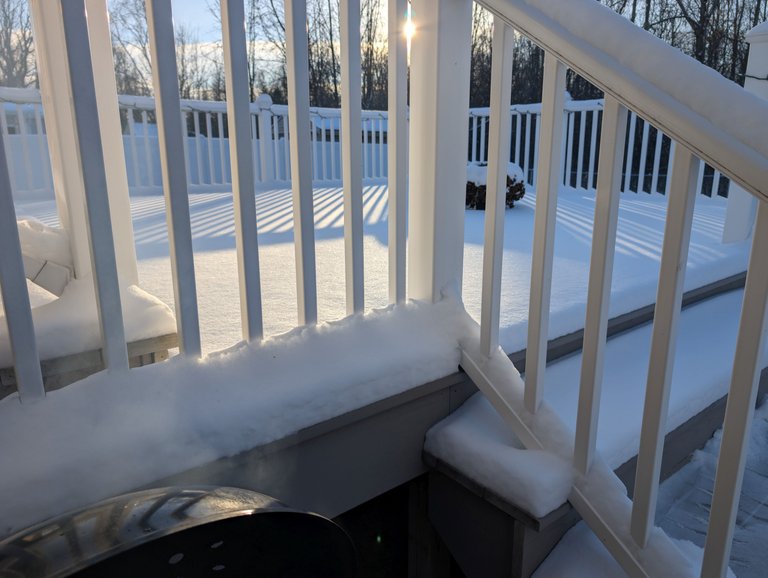
It was 3:45 PM in the afternoon when I put the brisket on the grill and the outdoor temperature was about 20 degrees F (-6.66667 C).
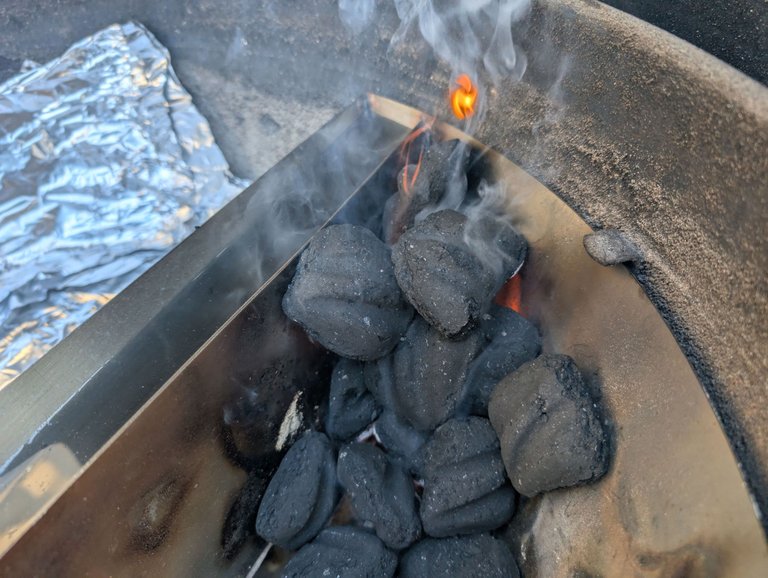
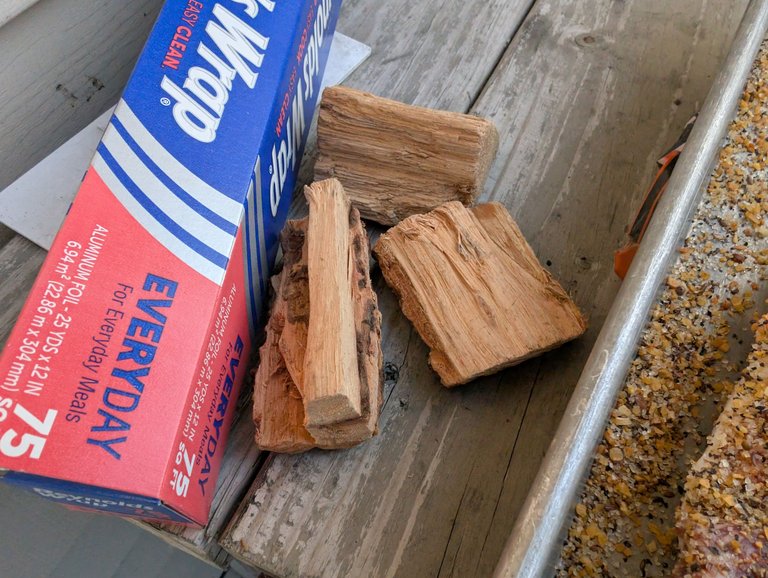
I used hunks of hickory wood and some mesquite chips for the smoke.

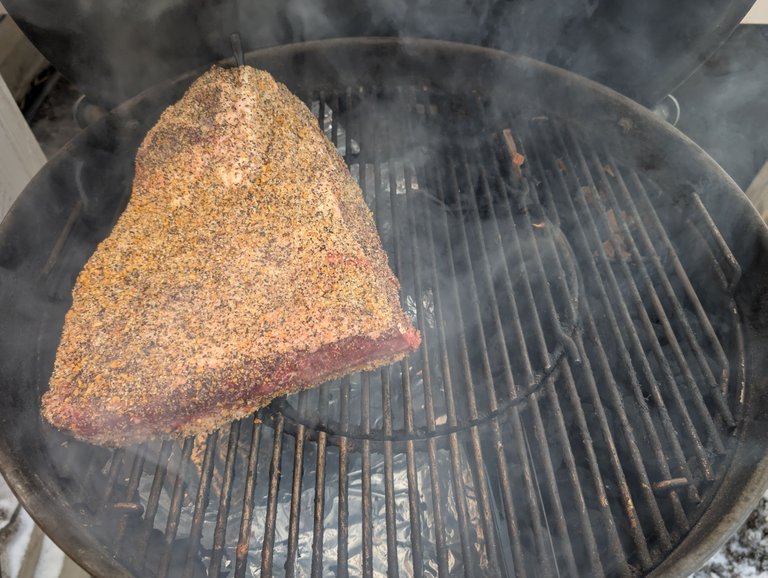

Once those first coals got going good, I filled the rest of the slow n sear with coals, put the brisket on the grate on the other side of the grill, and put the lid on.
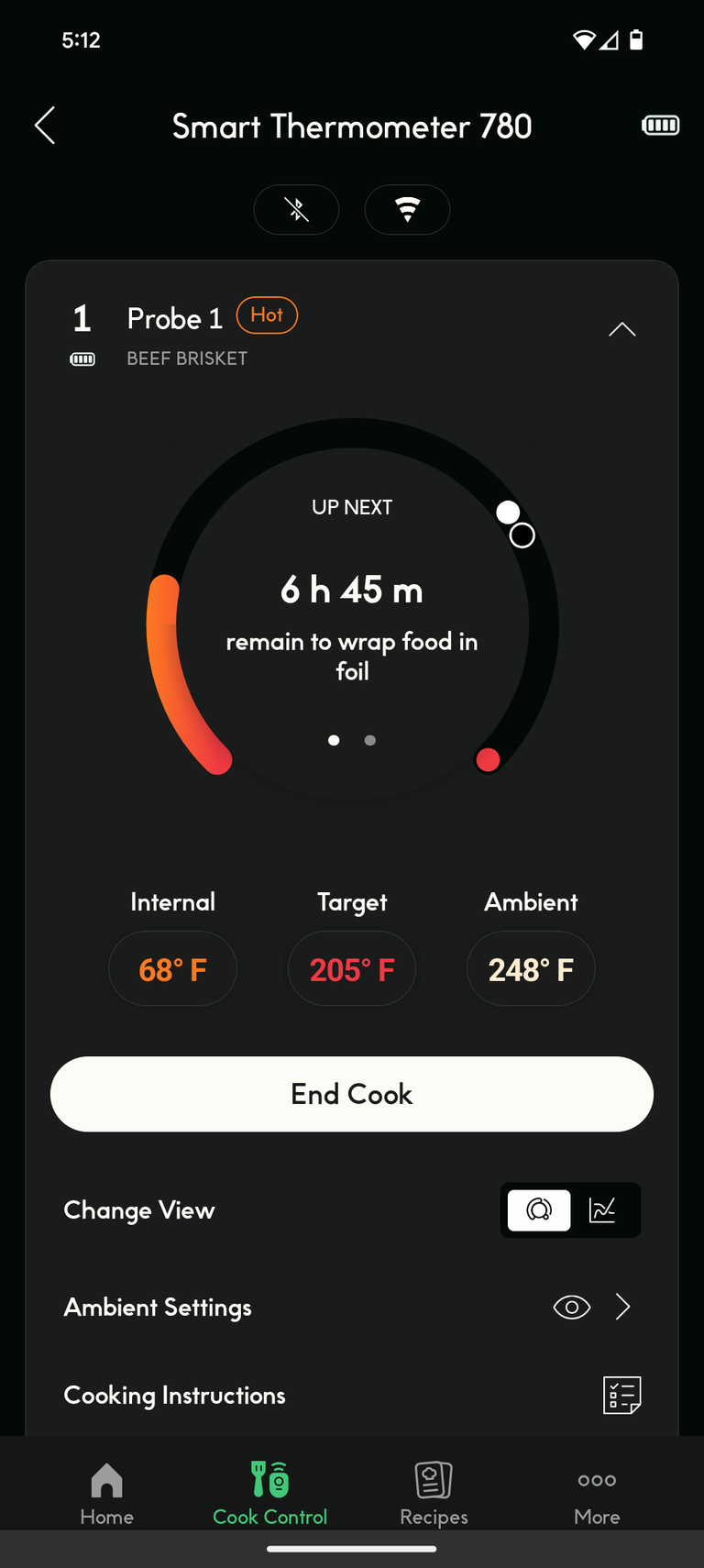
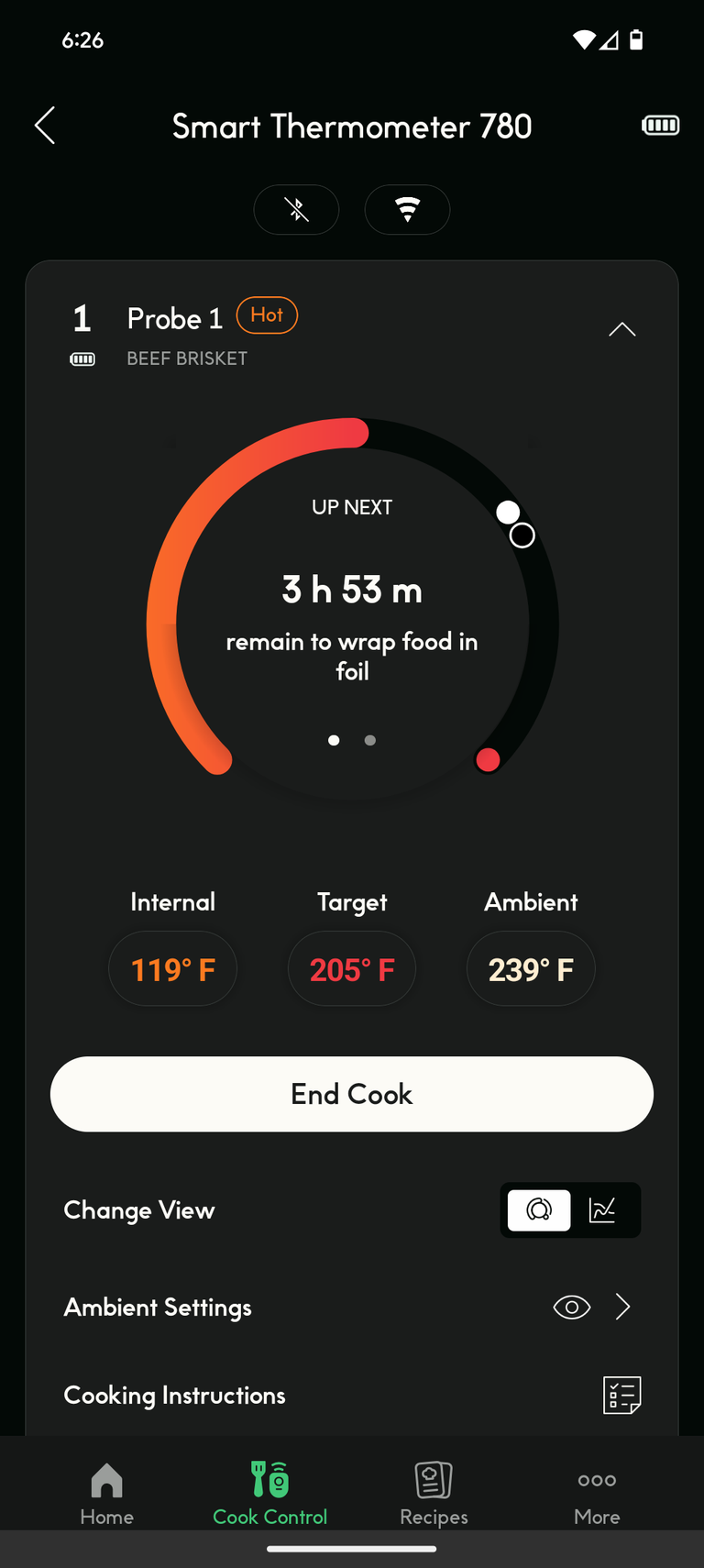
Then it was just a waiting game, running out to make small adjustments to the vents to keep my smoking temperature in the 225 to 250 degree range. It was a lot harder than I thought it would be given how cold it was outside. Looking back, I'd like to keep my temperature a bit lower and go a little longer I think.
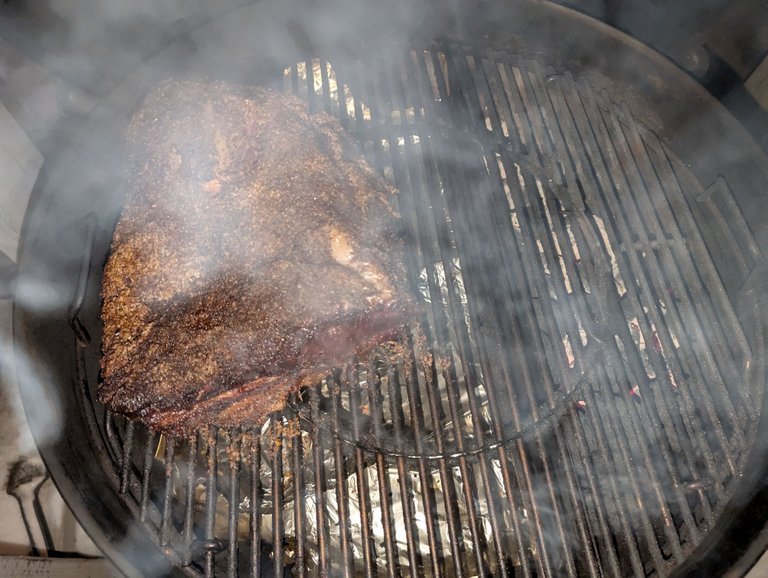
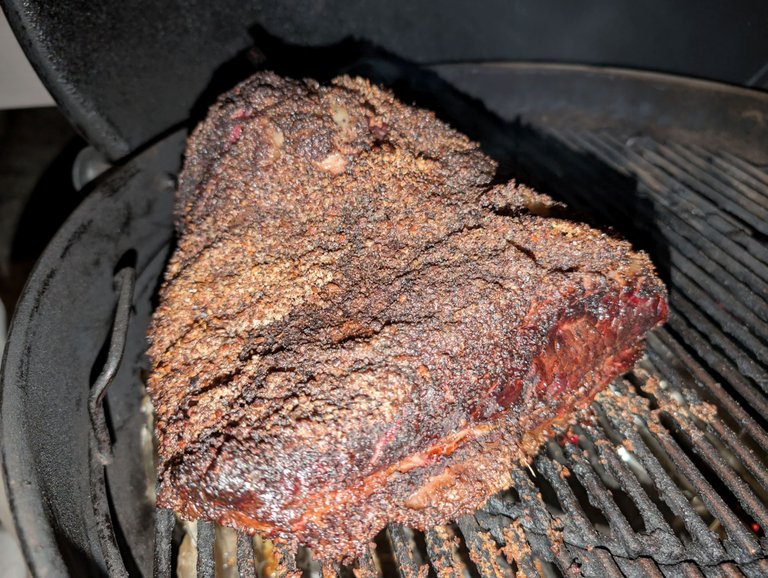
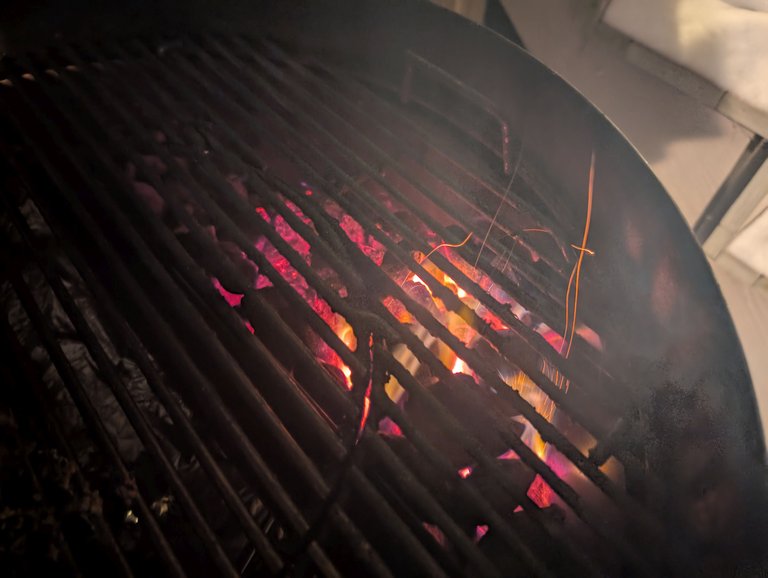
I don't remember what time it was, but eventually the brisket hit about 150 degrees F and entered the "stall" phase. This is when you tightly wrap it in foil or butcher paper and continue the cook. You can see from the shots above, the bark was looking quite nice. I read after the fact that a lot of people spray their brisket every so often with apple cider vinegar to keep it from drying out. Looking back, I maybe should have done that, but I really didn't want to keep opening the grill given how cold it was outside.

With the brisket tightly wrapped, I put some more coals in the basket and close the lid back up to let it do its thing.
At 10:00 PM it was 4 degrees F outside (-15 C) which is dang cold to be smoking a brisket. I understand why this is more of a summer thing now!
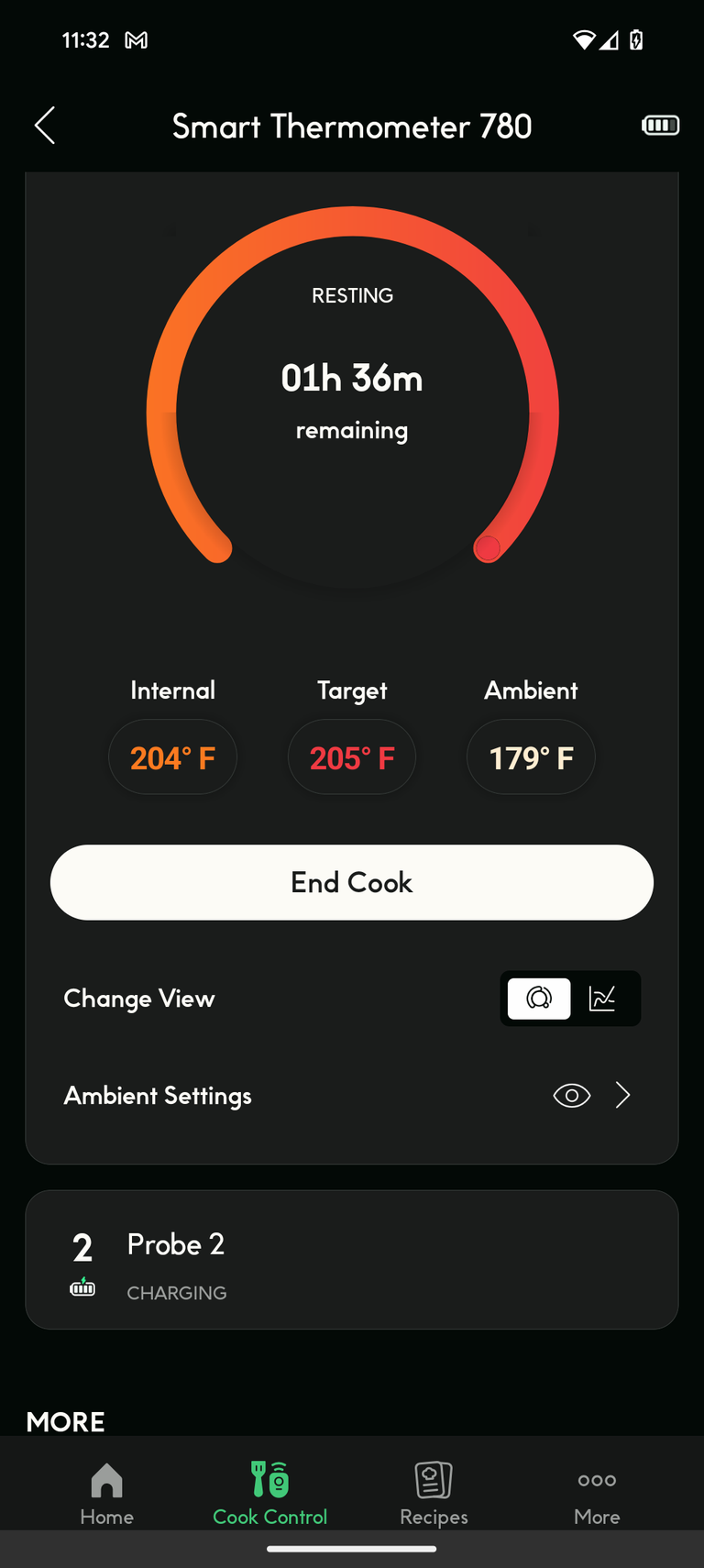

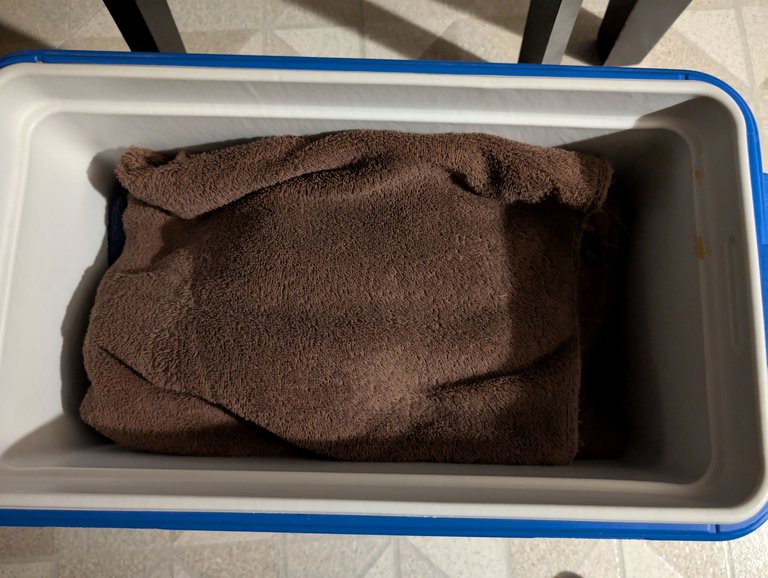
By 11 PM I had hit my target temperature of 205 degrees F. At that time I then pulled the foil wrapped brisket off the grill and wrapped it in towels and placed it in a small cooler I had to rest.
By about 3 AM the next morning or 12 hours later, it reached the desired temperature of 160 degrees F. Normally, that is when you would serve it to your guests or yourself, but it was at that time I moved it to the refrigerator to wait until Christmas Eve.
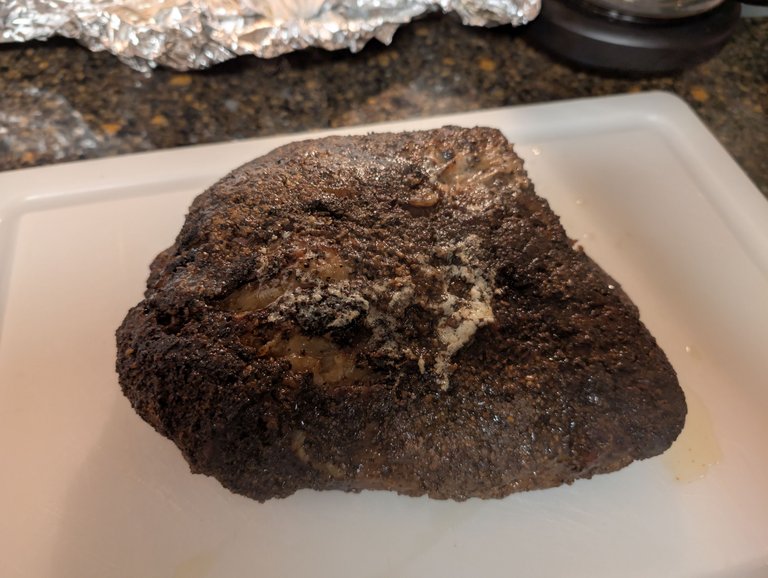
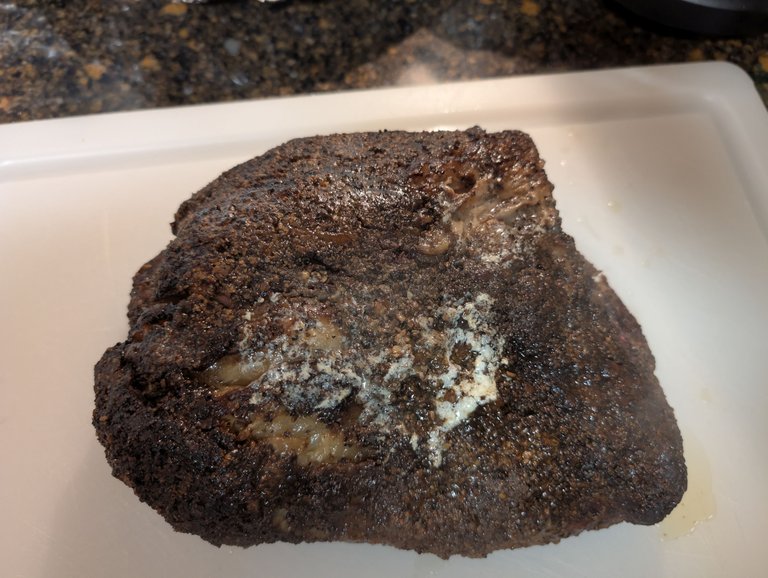
On Christmas Eve, my father in law and I unwrapped the brisket from foil, added a couple of pats of butter to the top, and then re-wrapped it in foil and put it in the oven for a couple of hours at about 250 degrees F until the temperature came back up to around 160 degrees.
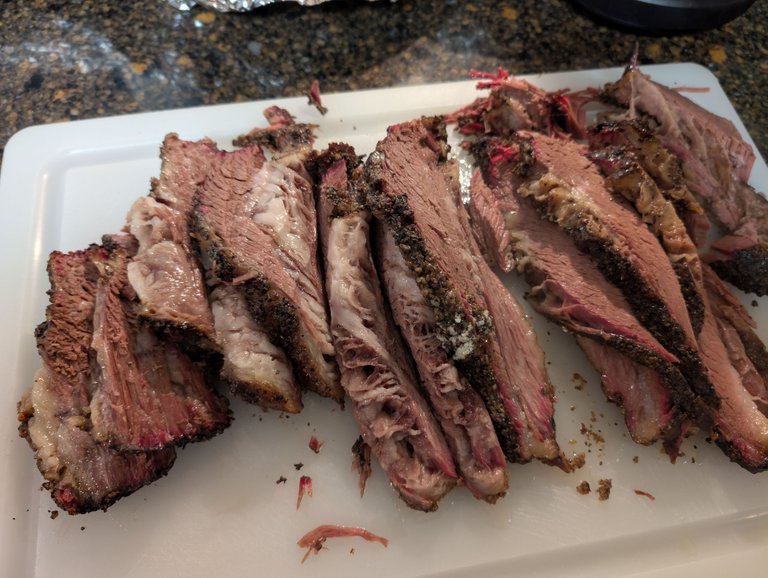
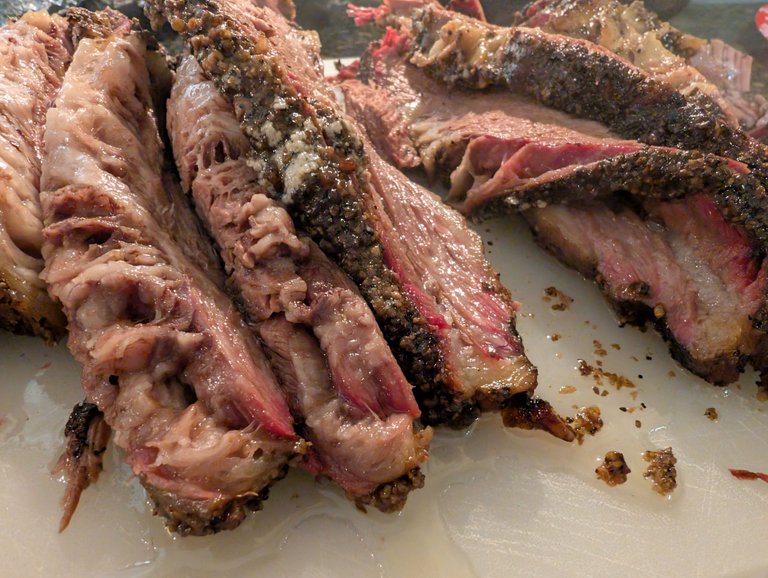
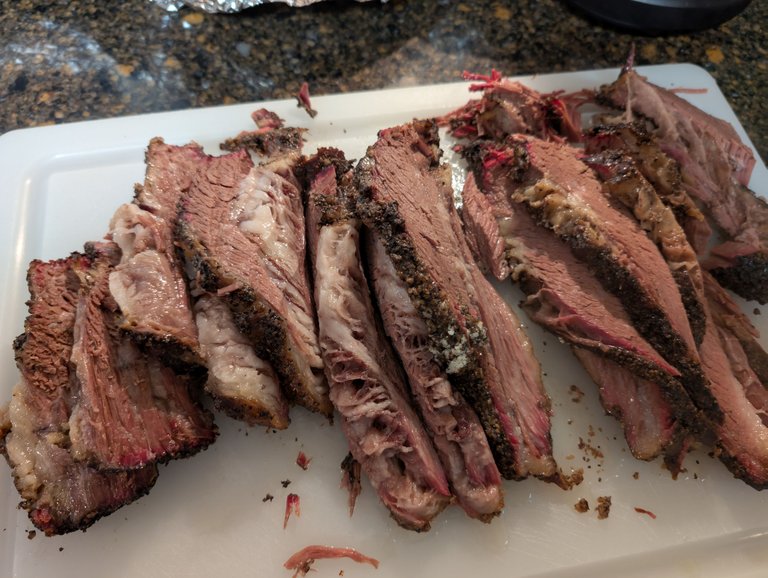
Brisket is a pretty fatty piece of meat to begin with, but as you can see from the photos, I could have stood to cut more of that outside fat off as I mentioned earlier. As I also mentioned, I really did feel like the rub was too salty. The brisket actually ended up being a little too tender so that it was falling apart as I cut it. I don't know if that is because I reheated it or what. I'd be interested to try this again and actually serve it without having to refrigerate it and then reheat it.
Despite all of that, it had a decent smoke ring and everyone said it was great and they seemed to love it. I thought maybe they were just being nice, but they went back for seconds and thirds, so I think they really did like it.
While I may not be satisfied with the overall cook, I am pleased that it turned edible and that I learned a few things that I can apply to future attempts. That's probably the best I could have hoped for to be honest. It was definitely a weight off my shoulders doing it a couple of days early. I honestly didn't know how I was going to fit everything in when I planned on doing it the day before.
Sports Talk Social - @bozz.sports
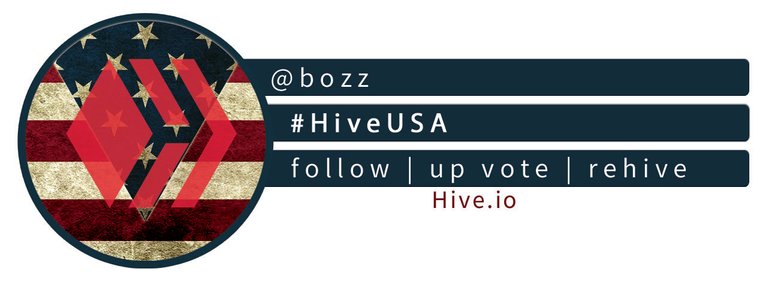

 )
)